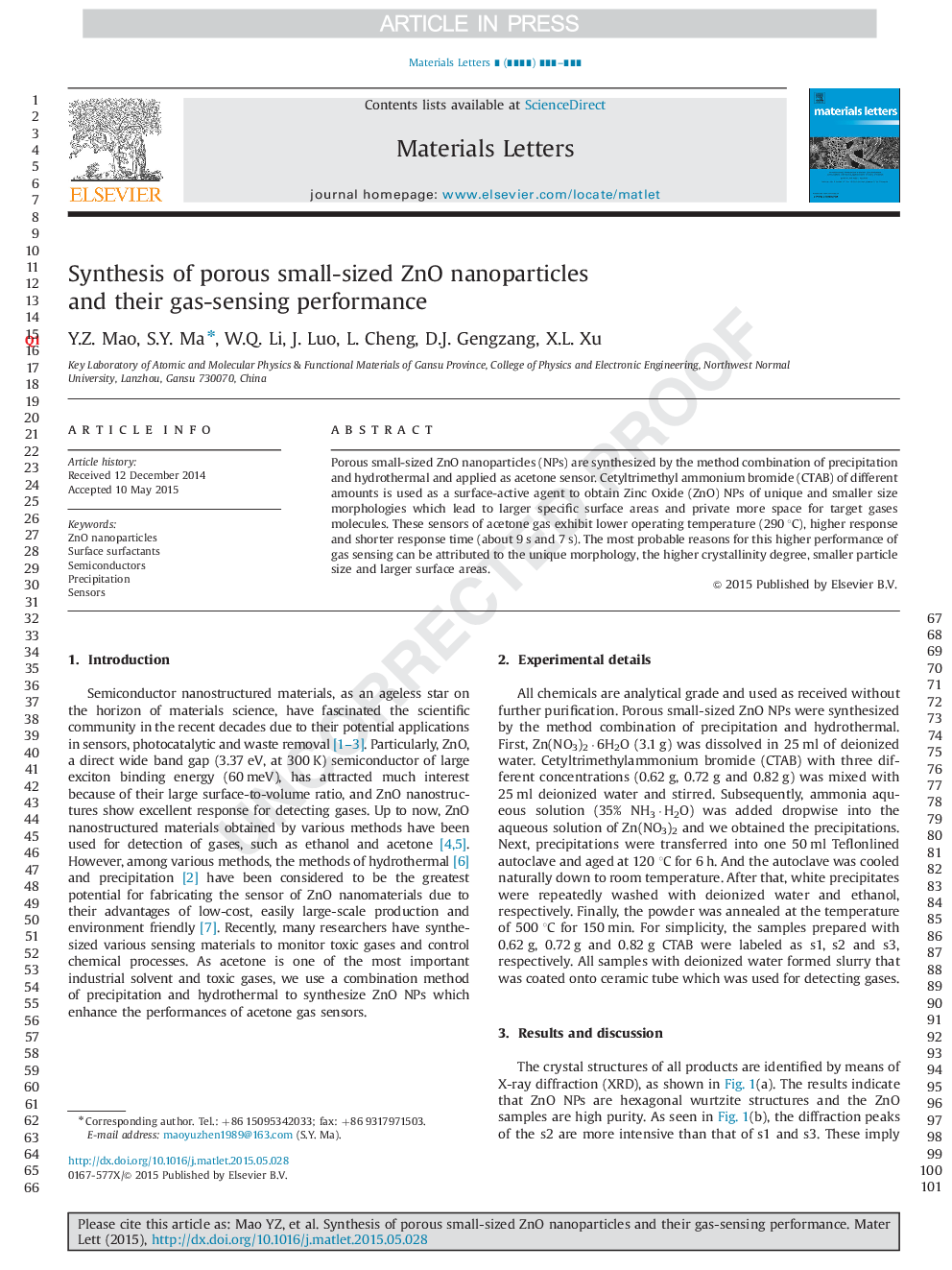| Article ID | Journal | Published Year | Pages | File Type |
|---|---|---|---|---|
| 8018070 | Materials Letters | 2015 | 4 Pages |
Abstract
Porous small-sized ZnO nanoparticles (NPs) are synthesized by the method combination of precipitation and hydrothermal and applied as acetone sensor. Cetyltrimethyl ammonium bromide (CTAB) of different amounts is used as a surface-active agent to obtain Zinc Oxide (ZnO) NPs of unique and smaller size morphologies which lead to larger specific surface areas and private more space for target gases molecules. These sensors of acetone gas exhibit lower operating temperature (290 °C), higher response and shorter response time (about 9 s and 7 s). The most probable reasons for this higher performance of gas sensing can be attributed to the unique morphology, the higher crystallinity degree, smaller particle size and larger surface areas.
Related Topics
Physical Sciences and Engineering
Materials Science
Nanotechnology
Authors
Y.Z. Mao, S.Y. Ma, W.Q. Li, J. Luo, L. Cheng, D.J. Gengzang, X.L. Xu,
